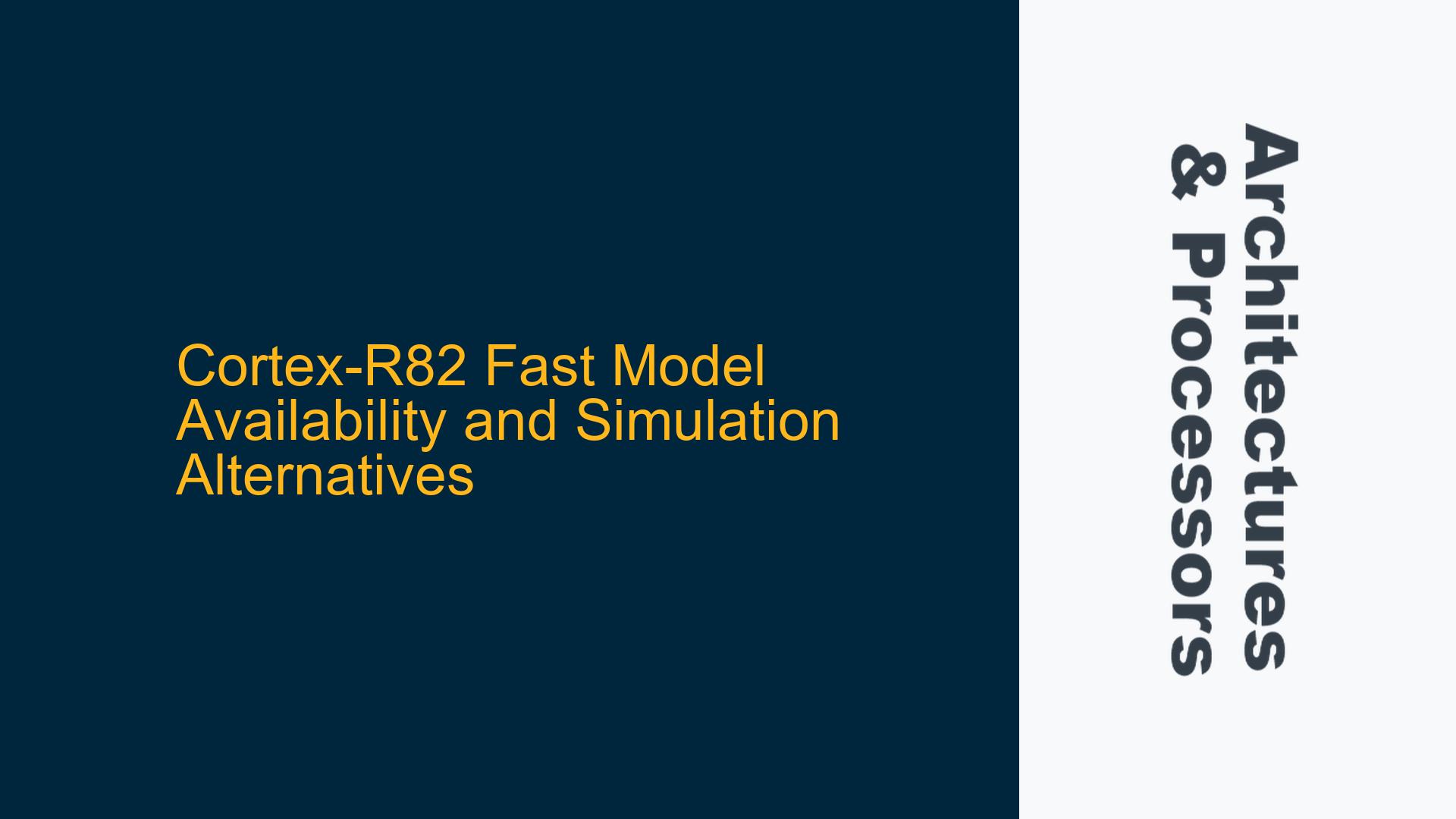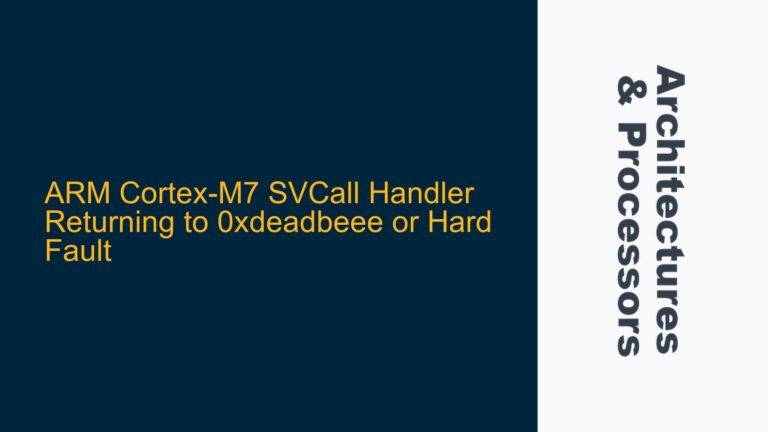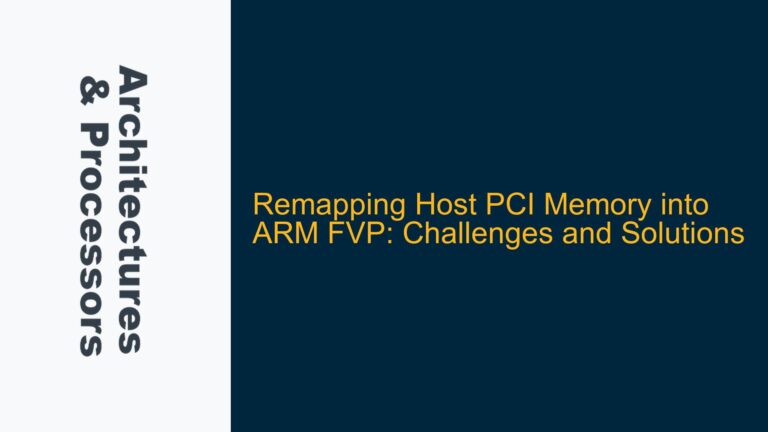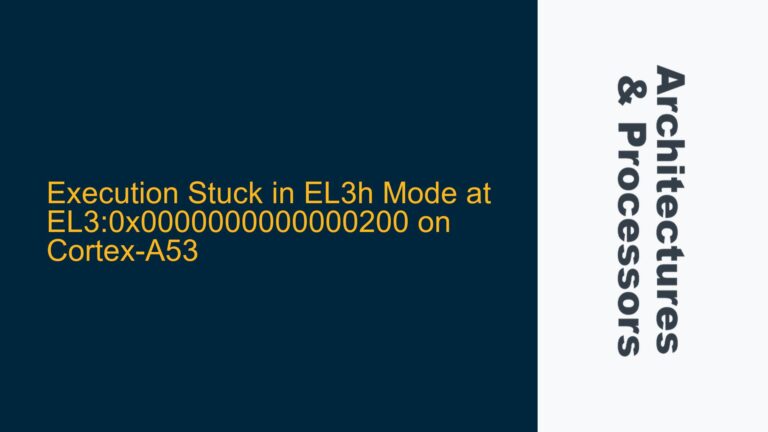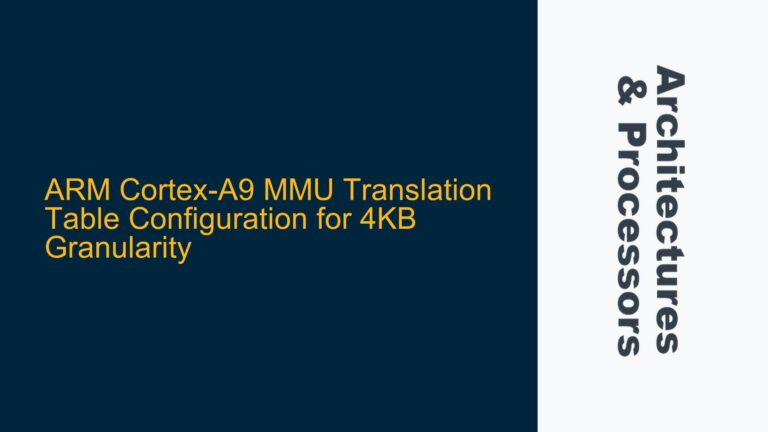Cortex-R82 Fast Model Beta Status and Release Timeline
The Cortex-R82 Fast Model is currently in a beta state, with limited availability for specific use cases. The beta model, specifically the Cortex-R82r0 variant, lacks an MMU (Memory Management Unit) and is distributed on a demand basis. This means that interested parties must contact ARM support directly to gain access, providing a detailed explanation of their use case to determine suitability. The final release of the Cortex-R82 Fast Model, including the Cortex-R82r1 variant with MMU support, has been delayed and is expected to be available sometime in 2022. This delay has significant implications for teams aiming to integrate the Cortex-R82 into their SoC designs, as the Fast Model is a critical tool for early software development, system validation, and performance analysis.
The Cortex-R82 is a high-performance real-time processor based on the ARMv8-R architecture, designed for applications requiring both real-time determinism and high computational throughput. Its dual-core configuration, combined with features like a memory protection unit (MPU) and optional MMU, makes it suitable for complex embedded systems such as automotive, industrial control, and storage solutions. However, the absence of a readily available Fast Model complicates the design and verification process, particularly for teams operating on tight schedules.
The beta Cortex-R82r0 Fast Model, while functional, is limited in scope. It does not include an MMU, which restricts its utility for applications requiring virtual memory management. This limitation is particularly problematic for teams developing software that relies on advanced memory management features, such as those found in modern operating systems or complex real-time applications. Furthermore, the beta model’s restricted distribution means that not all teams will have access to it, potentially delaying their development timelines.
AEMv8RMPCT as a Temporary Simulation Alternative
In the absence of a dedicated Cortex-R82 Fast Model, the AEMv8RMPCT model serves as a viable alternative for simulating the ARMv8-R architecture. The AEMv8RMPCT is an architectural model that emulates the behavior of processors based on the ARMv8-R architecture, including the Cortex-R82. While it is not a cycle-accurate representation of the Cortex-R82, it provides sufficient fidelity for software development and system-level simulation.
The AEMv8RMPCT model includes an MMU, making it a more comprehensive tool for teams requiring virtual memory support. This feature is particularly advantageous for developers working on software that leverages advanced memory management techniques, such as those found in Linux-based systems or complex real-time operating systems. However, it is important to note that the AEMv8RMPCT model does not replicate the exact microarchitectural details of the Cortex-R82, which may limit its usefulness for performance analysis and optimization.
The AEMv8RMPCT model is included in the Fast Models portfolio and is documented in the Fast Model Reference Manual accompanying version 11.16. This documentation provides a detailed comparison between the AEMv8RMPCT model and the Cortex-R82, highlighting the similarities and differences between the two. While the AEMv8RMPCT model is not a perfect substitute for the Cortex-R82 Fast Model, it offers a practical solution for teams needing to begin software development and system integration before the Cortex-R82 Fast Model becomes available.
Recommendations for Cortex-R82 Simulation and Development
Given the current limitations of the Cortex-R82 Fast Model and the availability of the AEMv8RMPCT model, teams should adopt a phased approach to Cortex-R82 simulation and development. The first phase involves leveraging the AEMv8RMPCT model for early software development and system-level simulation. This model provides a robust platform for developing and testing software that targets the ARMv8-R architecture, including applications that require MMU support.
Once the Cortex-R82 Fast Model becomes available, teams should transition to using it for more detailed performance analysis and optimization. The Cortex-R82 Fast Model will provide a cycle-accurate representation of the processor, enabling developers to fine-tune their software and system designs for maximum performance and efficiency. This transition should be carefully planned to minimize disruptions to the development process and ensure a smooth integration of the Cortex-R82 into the final SoC design.
In the interim, teams should also consider engaging with ARM support to explore the possibility of accessing the beta Cortex-R82r0 Fast Model. While this model lacks an MMU, it may still be useful for certain use cases, particularly those that do not require virtual memory management. By working closely with ARM support, teams can determine whether the beta model meets their needs and gain early access to this critical tool.
Additionally, teams should invest in comprehensive verification strategies to ensure the correctness and robustness of their Cortex-R82-based designs. This includes developing a thorough test plan that covers both functional and performance aspects of the design, as well as leveraging advanced verification methodologies such as UVM (Universal Verification Methodology) to automate and streamline the verification process. By adopting a proactive approach to verification, teams can mitigate the risks associated with the delayed availability of the Cortex-R82 Fast Model and ensure the successful integration of the Cortex-R82 into their SoC designs.
In conclusion, while the delayed availability of the Cortex-R82 Fast Model presents challenges for teams aiming to integrate this high-performance processor into their designs, the AEMv8RMPCT model offers a viable alternative for early software development and system-level simulation. By adopting a phased approach to simulation and development, engaging with ARM support, and investing in comprehensive verification strategies, teams can navigate these challenges and successfully bring their Cortex-R82-based products to market.
